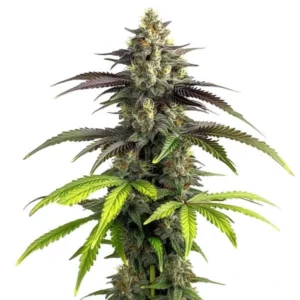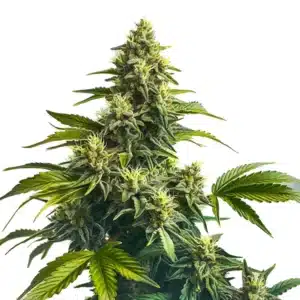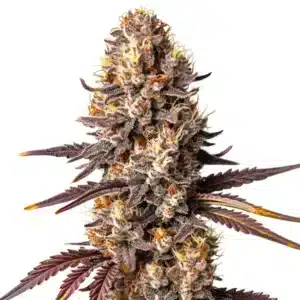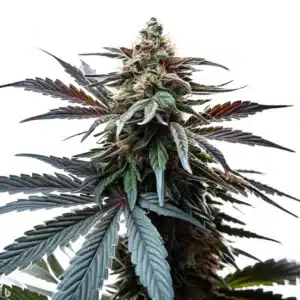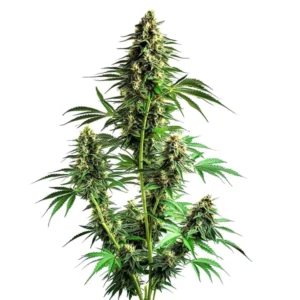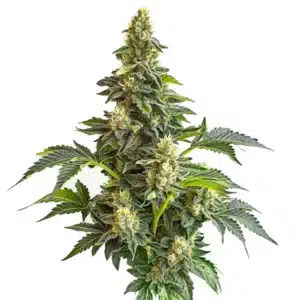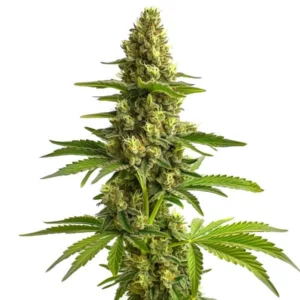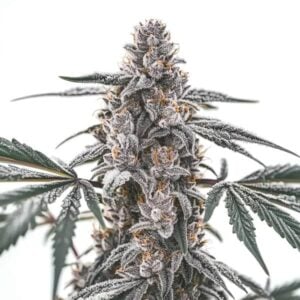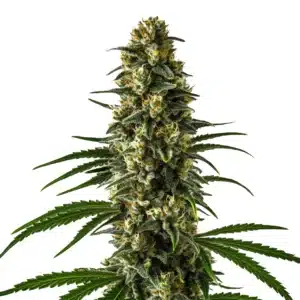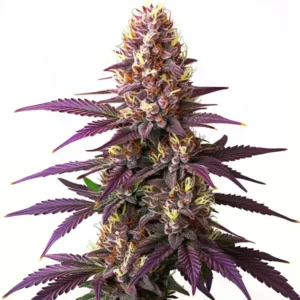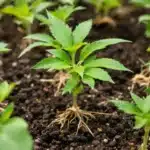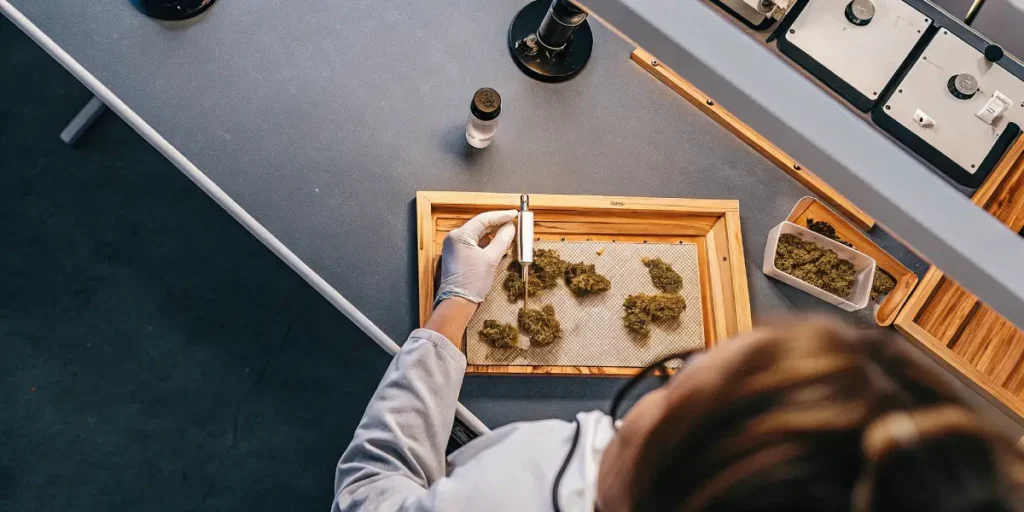
Best Hormone Ratios for Cannabis Growth
When it comes to cannabis cultivation, achieving the best hormone ratios for cannabis growth is key to a successful harvest. Whether you’re a first-time seed buyer or a seasoned grower, understanding how hormones influence your plants can make all the difference. These tiny chemical messengers control everything from growth speed to flowering stages, and getting the balance right can significantly boost your yield.
Hormones like auxins, cytokinins, and gibberellins interact in complex ways. Auxins promote root development and influence the direction of plant growth. Cytokinins encourage cell division and shoot formation. Gibberellins contribute to stem elongation and flowering. The right hormone mix for optimal cannabis yield involves tweaking these elements to match your plant’s life stage.
Recommended Strains
Bruce Banner 2.0
|
|
THC | 25% - 30% (High) |
|
|
Type | Feminized |
|
|
Yield | Medium |
|
|
Phenotype | 35% Indica / 65% Sativa |
Bruce Banner x Carmen
|
|
THC | 20% - 24% (Medium) |
|
|
Type | Feminized |
|
|
Yield | Medium |
|
|
Phenotype | 30% Indica / 70% Sativa |
For example, during the vegetative stage, a higher ratio of auxins to cytokinins is beneficial. This encourages root growth and helps the plant establish a strong foundation. As the plant transitions to the flowering stage, adjusting this balance to include more cytokinins can help produce denser, more abundant buds. Selecting the right strains, like those from Blimburn Seeds, can also play a role. Consider strains such as Bruce Banner 3, Girl Scout Cookies, and Black Widow for robust growth and high yields.
Knowing Hormones in Cannabis Cultivation
Hormones serve as the plant’s internal communication system. They signal when to grow, when to stop, and when to flower. The optimal hormone balance cannabis cultivation requires depends on the plant’s stage of growth. By tailoring your approach, you can maximize your plant’s potential.
Auxins are crucial for root development. They are typically found in higher concentrations in the plant’s growing tips. This makes them essential during the early stages of growth when establishing roots is critical. Cytokinins, found in greater abundance in the roots, travel upward and stimulate growth of shoots and leaves. Getting the best hormone proportions weed growth means balancing these two hormones effectively.
Knowing the intricate balance between these hormones is like following a cannabis growth hormone ratio guide. With the right information, you can make precise adjustments that cater to your specific growing conditions. This attention to detail helps ensure that your plants receive the best hormone ratios for cannabis growth, ultimately leading to healthier and more productive plants.
Advanced growers often experiment with different hormone combinations to discover what works best for their specific strains and environments. By keeping detailed records of your adjustments and their outcomes, you can refine your approach over time and achieve the ideal hormone levels marijuana growth demands. This methodical approach is key to unlocking your plant’s full potential and achieving high-quality yields.
Auxins and Their Role in Growth
Auxins mainly promote cell elongation, helping plants grow taller and stronger. These hormones are concentrated in the plant’s tips, where they direct growth towards light sources. This makes them essential for seedlings and young plants that need to stretch towards the light.
In practical terms, managing auxin levels involves ensuring adequate light and proper pruning. For instance, topping or fimming cannabis plants can redistribute auxins, encouraging bushier growth. This technique is particularly effective with strains like Black Widow from Blimburn Seeds, known for its vigorous vegetative growth.
Auxins also play a critical role in the plant’s ability to adapt to its environment. By influencing cell elongation, they help the plant adjust its structure to capture more light, which is crucial for photosynthesis. This adaptability makes auxins a vital component in achieving the best hormone ratios for cannabis growth.
Moreover, auxins can affect the plant’s root system, enhancing its ability to absorb water and nutrients. A well-developed root system is essential for sustaining healthy growth and achieving an optimal hormone balance cannabis cultivation requires. By paying close attention to auxin levels, growers can ensure their plants are well-equipped to handle environmental stresses.
The Importance of Cytokinins
Cytokinins are pivotal during the vegetative stage. They promote cell division and shoot formation, contributing to a bushier plant. This is important for developing a canopy that can support multiple flowering sites, leading to better yields.
For cannabis growers, applying cytokinins can be as simple as ensuring the roots remain healthy and hydrated. A well-aerated growing medium that retains moisture can promote cytokinin production. Strains like Girl Scout Cookies from Blimburn Seeds often benefit from a cytokinin boost, producing robust plants with numerous bud sites.
Cytokinins also play a crucial role in delaying the aging process of leaves, maintaining their green color and photosynthetic efficiency. This function is vital for sustaining plant health throughout the growth cycle, contributing to the hormone mix for optimal cannabis yield. Healthy leaves ensure that the plant can produce energy efficiently, supporting vigorous growth and abundant flowering.
Furthermore, cytokinins help the plant manage its nutrient uptake, ensuring that essential elements are transported efficiently throughout its structure. This balance is crucial for maintaining the best hormone ratios for cannabis growth, as it supports both root and shoot development. Adequately managing cytokinin levels can make a noticeable difference in the overall vigor and productivity of your plants.
The Function of Gibberellins
Gibberellins are another critical hormone group involved in stem elongation and flowering. They are particularly active during the transition from vegetative growth to flowering. Getting the ideal hormone levels marijuana growth means adjusting gibberellin levels at the right time.
For practical application, gibberellins can be manipulated through environmental factors like light and temperature. For instance, longer daylight hours can naturally increase gibberellin activity, promoting flowering. This is particularly useful for strains like Bruce Banner, which thrive under optimized light conditions.
Gibberellins are also responsible for breaking seed dormancy, a process that can significantly impact germination rates. By ensuring the right gibberellin levels, growers can improve the success rate of seedling development, a fundamental step in the cannabis growth hormone ratio guide. This early-stage advantage sets the foundation for a strong and healthy plant lifecycle.
Additionally, gibberellins influence the plant’s ability to adapt to environmental stressors, such as temperature fluctuations and humidity changes. By fine-tuning gibberellin levels, growers can enhance their plants’ resilience, ensuring that they thrive even under challenging conditions. This adaptability is a key aspect of achieving the best hormone proportions weed growth requires.
Promos & Deals
Creating the Best Hormone Mix for Cannabis
Crafting the best hormone mix for optimal cannabis yield involves a combination of plant care techniques and environmental adjustments. By knowing how each hormone functions, you can tailor your approach to your specific strain and growing conditions.
For first-time growers, starting with a balanced nutrient solution that supports both root and shoot growth is essential. As your plants develop, observing their response to environmental changes can guide further adjustments. For experienced growers, advanced techniques like defoliation and super cropping can further refine hormone balance and improve yields.
Implementing a comprehensive cannabis growth hormone ratio guide can simplify the process of creating the best hormone mix. By following structured guidelines, growers can make informed decisions about hormone management, ensuring that their plants receive the precise care needed for each growth stage. This strategic approach is key to achieving consistent and high-quality yields.
Collaboration with other growers and sharing experiences can also provide valuable insights into effective hormone management strategies. By learning from others and adapting proven techniques to your unique setup, you can continuously improve your growing practices, ensuring that your plants achieve the ideal hormone balance cannabis cultivation demands.
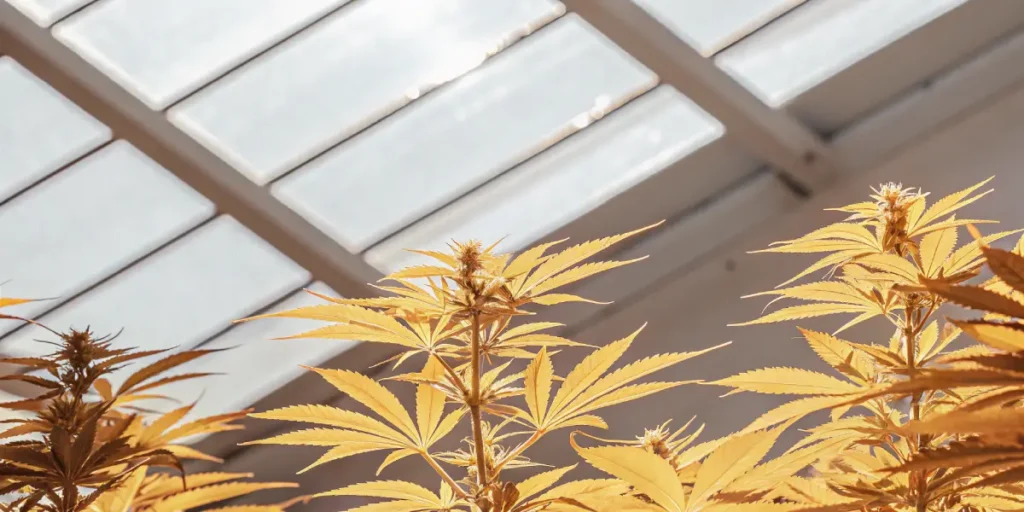
Tailoring Hormone Ratios for Different Strains
Different cannabis strains have unique growth patterns and hormone needs. Strains like Black Widow may require higher auxin levels initially for strong root development. In contrast, strains like Girl Scout Cookies might benefit from increased cytokinins to enhance bud production.
Monitoring plant health and growth can guide your adjustments. Signs of imbalance, such as uneven growth or poor flowering, can often be traced back to hormone levels. By keeping detailed records of your growing conditions and results, you can fine-tune your approach for future crops.
Knowing the specific needs of each strain is vital for optimizing the hormone mix for optimal cannabis yield. By conducting thorough research and using strain-specific data, growers can make precise adjustments that cater to the unique requirements of their plants. This targeted approach is essential for maximizing both yield and quality.
Experimentation is a key component of tailoring hormone ratios effectively. By testing different hormone combinations and observing the results, growers can develop a personalized strategy that aligns with their goals and preferences. This willingness to explore and adapt is crucial for achieving the best hormone ratios for cannabis growth, ensuring that each crop reaches its full potential.
FAQs: Best Hormone Ratios for Cannabis Growth
What are the best hormone ratios for cannabis growth?
Finding the best hormone ratios for cannabis growth involves balancing auxins, cytokinins, and gibberellins according to the plant’s life stage. During the vegetative stage, higher auxin levels promote root development. As the plant enters the flowering stage, increasing cytokinin levels can enhance bud production. Adjustments should be based on the plant’s response to these hormones.
For beginners, starting with a balanced nutrient solution that supports overall plant health is a good approach. Experienced growers can experiment with specific hormone boosters to fine-tune growth and yield. Remember, every strain may require different adjustments, so observing plant behavior is key.
Utilizing an effective cannabis growth hormone ratio guide can simplify the process of determining the best hormone ratios for each growth stage. By following established guidelines and monitoring plant responses, growers can make informed decisions that enhance both growth and yield.
It’s important to remain flexible and open to adjustments, as different environmental factors and growing conditions can influence hormone needs. By staying attentive and responsive to your plants’ needs, you can maintain the optimal hormone balance cannabis cultivation requires, ensuring successful and rewarding harvests.
How do I know if my cannabis plants have the optimal hormone balance?
Signs of optimal hormone balance include healthy growth patterns, robust root systems, and abundant flowering. Plants should exhibit even growth without excessive stretching or stunted development. Leaves should be vibrant green, and flowers should form evenly across the plant.
If you notice issues like yellowing leaves, uneven growth, or poor flowering, it may indicate a hormone imbalance. Adjusting your nutrient regimen and environmental conditions can help restore balance. Keeping a detailed grow journal can aid in identifying patterns and making informed adjustments.
Regular monitoring and documentation are essential components of maintaining the ideal hormone levels marijuana growth demands. By tracking your plants’ progress and noting any deviations from expected patterns, you can quickly identify and address potential imbalances, ensuring continued health and productivity.
Engaging with the growing community and seeking advice from experienced cultivators can also provide valuable insights into achieving the best hormone proportions weed growth requires. By sharing knowledge and learning from others’ experiences, you can enhance your knowing of optimal hormone balance in cannabis cultivation.
Can hormone ratios affect the potency of cannabis?
While hormone ratios primarily influence growth and yield, they can indirectly affect potency. A balanced plant that receives adequate light, nutrients, and care is more likely to produce potent buds. Hormones help regulate the plant’s development, ensuring it reaches its full genetic potential.
For example, strains like Bruce Banner are known for their high potency. Ensuring the plant has the right hormone balance during its growth stages can optimize resin production, contributing to stronger effects. Proper care and attention to hormone levels are crucial for achieving maximum potency.
Achieving the best hormone ratios for cannabis growth is essential for unlocking the full potential of your plants’ cannabinoid and terpene profiles. By ensuring optimal hormone balance throughout the growth cycle, growers can enhance the overall quality and potency of their harvests.
Furthermore, maintaining ideal hormone levels supports the plant’s ability to produce secondary metabolites, which contribute to its flavor, aroma, and effects. By optimizing hormone ratios, growers can ensure that their cannabis plants deliver the desired sensory and experiential qualities.
What environmental factors influence hormone levels in cannabis?
Environmental factors such as light, temperature, and humidity play a significant role in regulating hormone levels. Light cycles, in particular, influence gibberellin activity, affecting flowering timing. Temperature and humidity can impact cytokinin and auxin levels, influencing plant structure and growth rate.
Controlling these factors through careful monitoring and adjustment can help maintain optimal hormone levels. For example, using grow lights to simulate longer daylight hours can promote flowering in photoperiod strains. Maintaining stable temperatures and humidity levels can support healthy hormone function.
Knowing the interplay between environmental factors and hormone balance is crucial for implementing an effective cannabis growth hormone ratio guide. By accurately managing these variables, growers can create an environment that supports the best hormone ratios for cannabis growth.
Advanced technologies, such as automated climate control systems, can assist in maintaining consistent environmental conditions. By leveraging these tools, growers can ensure that their plants receive the best possible care, optimizing hormone levels and enhancing overall growth performance.
Are there natural ways to adjust hormone levels in cannabis plants?
Yes, natural methods such as pruning, training, and environmental control can influence hormone levels. Techniques like topping and fimming alter auxin distribution, encouraging bushier growth. Scrogging and LST (Low-Stress Training) can help manage plant shape and encourage even hormone distribution.
Besides to these techniques, ensuring optimal soil health and using organic fertilizers can support natural hormone balance. Healthy soil with a rich microbial ecosystem can enhance nutrient uptake and hormone production, leading to healthier and more productive plants.
Natural methods for adjusting hormone levels often align with sustainable and eco-friendly growing practices, contributing to both plant health and environmental stewardship. By focusing on organic solutions and minimizing chemical inputs, growers can achieve the optimal hormone balance cannabis cultivation requires.
Furthermore, these natural approaches promote plant resilience and adaptability, allowing cannabis plants to thrive in a variety of conditions. By embracing holistic growing techniques, cultivators can ensure that their plants receive the best possible care, leading to successful and rewarding harvests.


